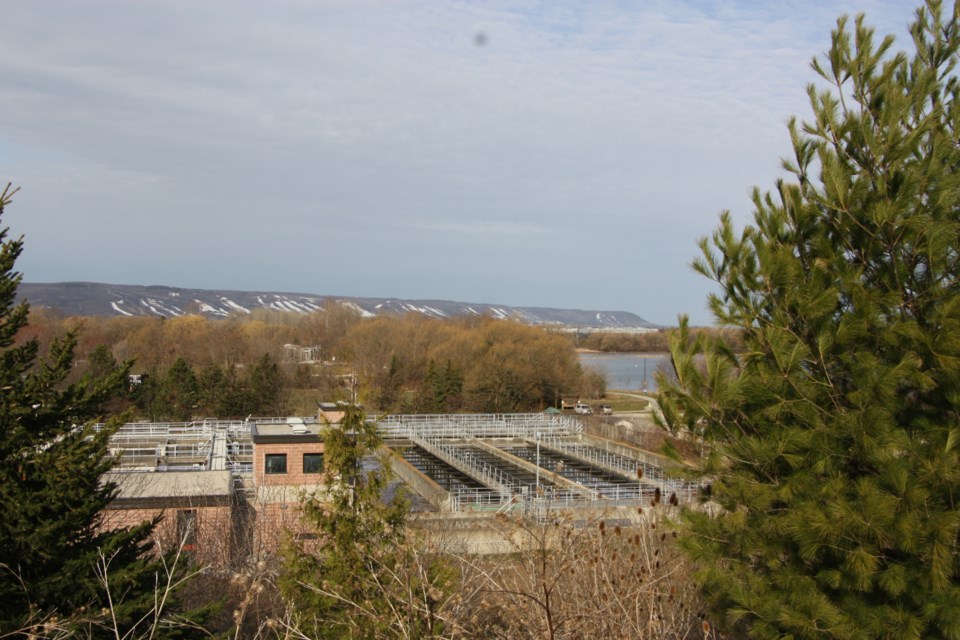The latest information gathered through wastewater testing indicates low levels of COVID-19 infections in Collingwood and Midland, and an increase in Barrie and Orillia.
Both Barrie and Orillia have seen an increase in confirmed COVID-19 cases over the past four weeks, with less than five cases reported in Collingwood and Midland.
Though wastewater surveillance cannot, on its own, accurately predict the amount of COVID-19 virus circulating in a community, Simcoe-Muskoka's medical officer of health, Dr. Charles Gardner, said it’s a useful tool to use with other methods to get a more complete picture of the virus transmission in a community.
Wastewater surveillance for COVID-19 has been underway in Simcoe County since February. The process involves testing sewage for the presence of SARS-CoV-2 virus ribonucleic acid (RNA), which, if positive, suggests some level of COVID-19 presence in the population.
SARS-CoV-2 refers to the virus, while COVID-19 is the disease humans get from the virus.
In Collingwood, wastewater sampling has shown an average 0.38 copies of virus RNA per litre from May to August. The average was as high as 3.86 copies per litre for two weeks in May. Cases in Collingwood did increase in late May and for the month of June with 15 cases confirmed in town between May 18 and June 10.
Collingwood's manager of environmental services, Healthy McGinnity, stated in a news release from the town she's glad to see the results being shared publicly.
"Our Wastewater team is happy to be able to continue to contribute one piece of information to the extensive COVID-19 decision making dataset," she stated in the news release.
Midland has seen a similar flat line in wastewater surveillance with an average of 0.15 copies of the virus per litre since May. Case rates have remained low throughout that time ranging from zero to 0.4 cases per day (seven-day average).
In Barrie, wastewater surveillance showed virus RNA increasing from 0.99 copies per litre for the week of Aug. 1 to 2.03 copies per litre for the week of Aug. 8. The case rates followed a similar trajectory with about 2.7 cases per day (seven-day average) for the week of Aug. 1 to 5.3 cases per day for the week of Aug. 8.
In Orillia, wastewater surveillance shows a steady increase in virus RNA for the month of August from an average of 0.15 copies per litre at the beginning of the month to 0.3 copies per litre in the last samples from Aug. 20. Cases have increased more dramatically from zero per day at the beginning of the month (seven-day average) to two cases per day by mid-August.
Public Health Ontario reported the virus is shed in feces (sometimes urine) of people who are asymptomatic, pre-symptomatic or symptomatic, or those recovering from COVID-19. It can be shed for a few days or up to several weeks.
“Studies have shown this is yet another way of monitoring for the presence of the virus in the community… (and) it can be a lead indicator for an elevation of case transmission in the community,” said Gardner.
Wastewater surveillance in the region includes samples collected from Barrie, Collingwood, Midland and Orillia with participation from the municipalities working with the Ontario Ministry of the Environment, Conservation and Parks Wastwater Surveillance Initiative, and with Ontario Tech University.
Some surveillance has shown changes in wastewater levels of the virus can give five to 10 days warning before changes in reported cases are seen, though it’s not a guaranteed outcome.
“Signals in wastewater may act as a lead (early) indicator for changes in community infection levels, however, given the overall variability and the low number of cases in Collingwood, Midland, and Orillia, it is unclear how strong of a predictor wastewater surveillance for COVID-19 is,” states the health unit website. “Short-term changes in wastewater viral RNA signals may not always correspond to changes in reported COVID-19 cases in the community.”
Public Health Ontario also estimated about 60 per cent of the virus RNA in wastewater could be from recovered, non-infectious cases.
Gardner, the local health unit, and Public Health Ontario have maintained that wastewater surveillance is a helpful indicator if used in conjunction with other public health data including COVID-19 testing, reported cases, hospitalizations, and outbreaks, but wastewater surveillance cannot replace existing testing and monitoring mechanisms for COVID-19.
For more information on wastewater surveillance for virus RNA, click here.
